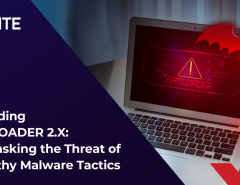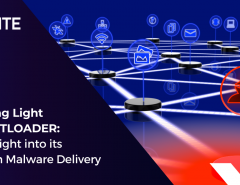Cybersecurity experts are always cautious when they hear the word “exploits”, and for good reason. Exploits are often a preferred channel through which cybercriminals like to hit their targets. What makes it easier for these criminals is that exploits can be any and everywhere, making it literally a maze for cybersecurity experts.
Exploits are basically a program or code that takes advantage of security holes (vulnerabilities) in an application or system. They take advantage of weaknesses in an operating system, application or software, including plugins or software libraries. Sometimes, users can get infected by malware which takes advantage of these exploits. They may visit websites where there is malicious code which checks for these vulnerabilities. If they are found, then the malware is pushed through, hence taking advantage of the exploit.
It is important to understand the distinction between exploits and malware. While exploits are not technically malware, they can be considered channels for the delivery of malware which makes it dangerous.
Exploits can be categorized into two types: known exploits and unknown exploits which are also referred to as zero-day exploits.
- Known Exploits: These are vulnerabilities which have already been discovered and documented. While these exploits have already been discovered and patches released for them, they can still be dangerous. Users may not be aware of these exploits and may not have updated their systems which mean that despite being known, these exploits can still cause potential trouble.
- Unknown or Zero-Day Exploits: These types of exploits can be very dangerous as they have still not been discovered, hence giving it their name zero-day. They are only detected once cybercriminals have noticed and exploited it. This means developers of apps and every other stakeholder in the cybersecurity ecosystem has to rush against time after discovering this vulnerability. A solution has to be developed and then rushed out to everyone. In the meantime, cybercriminals can cause a lot of havoc.
With advancements in security software, it has become easier to identify zero-day exploits much earlier. The security applications that track the behavior of other applications, to identify anomalous or malicious activity, can highlight possible vulnerabilities. Artificial Intelligence based security software is getting capable of identifying gaps before criminals can use them to break in.
To ensure users stay updated on exploits and the latest vulnerabilities, Seqrite keeps tracking and publishing articles on the most recent cases. It is an excellent resource to stay on top of recent threats and vulnerabilities. In February 2018, it was observed that malspam campaigns were exploiting a recent Microsoft Office vulnerability CVE-2017-11882. Then in January, Chrome extensions were exploited in a massive PUL A campaign while in the most infamous case, the WannaCry ransomware created havoc globally by exploiting a patched Windows exploit.
Apart from keeping an eye on the Seqrite blogs to get the news of the latest exploits, here are some other ways to protect your enterprise from exploits:
- Always check for and install the latest software patches and upgrades. Many commercial software can automatically check, authenticate and install updates across all the computers in the organization.
- Follow safe browsing practices. Implement network control to bar social media sites and other sites that are not required for your business.
- Encrypt all data, whether stationary or dynamic, as it is the best defense against theft or leakage.
- Use state of the art cybersecurity software like Seqrite’s range of advanced solutions to protect enterprise network and all devices on it. Implement integrated network management software that can identify the devices which are not compliant with the organization’s security policy.
- Educate employees and other users to follow safe online practices, not to connect to the unsecured network and always stay vigilant.
As an IT security partner for your business, Seqrite provides comprehensive security from advanced cyber threats. To know more





No Comments